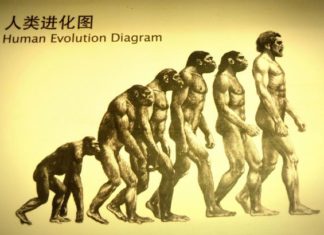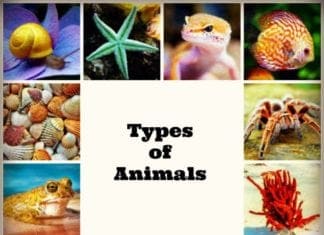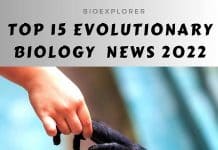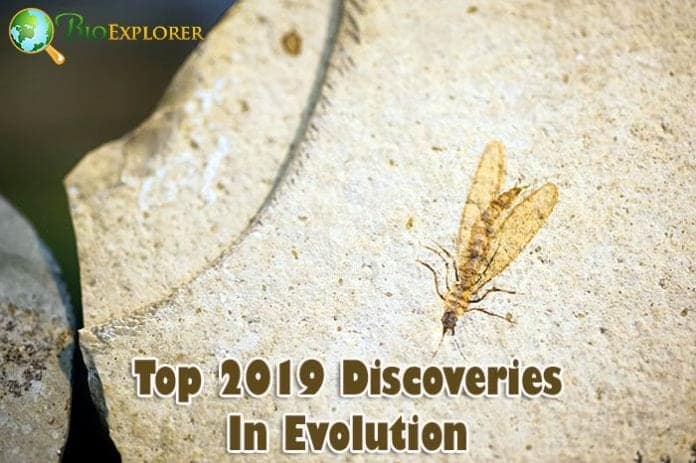
The evolution discoveries in 2019 show that the new approaches to traditional research areas such as paleobiology and the use of modern technology can offer unique, previously unimaginable insights.
Some discoveries may help scientists answer long-standing questions that haunted many prominent evolutionary biologists, starting from Darwin. It is now possible to trace the appearance of embryonic development with the help of tomography and reconstruct the evolution of bird feathers.
New findings also show us that we still do not know enough about the ancestors of humans, and there may always be new members of even the genus Homo, as findings in the Philippines demonstrate.
Complete History of Evolution
Top 2019 Discoveries in Evolution
The recent discoveries in human evolution 2019 described here force scientists to review long-standing concepts, deepening our understanding of the emergence and evolution of life.
The expanded Homo family: new hominin species found [France-Australia-Phillipines, April 2019]
The archipelago of the Philippines seems to be an ancient refuge for unique species that were part of the genus Homo.
Previously, the isle of Flores in the south-west of the Philippine archipelago was established to be home to a previously unknown species – Homo floriensis, famously known as “the hobbit” because of its stature. Currently, an international team of researchers from Australia, France, and the Philippines has undertaken excavations on another island – Luzon, Northeastern Philippines.
- In 2007, a hominin third metatarsal was found in the Callao Cave, Luzon.
- In 2019, the research was expanded, and the paleontologists have uncovered (Bones of the fingers and toes, Teeth, and Femur (presumably belonging to a child)).
- There were 12 bones found in total, and according to the analysis, they belonged to at least three individuals.
- The limbs bones were found to resemble those of an Australopithecus.
- Some features also are thought to be similar to previously found Homo floriensis, also known as the “hobbit.”
- The stone tools at the same site were dated about 700,000 years ago.
- The islanders were probably hunters – rhinoceros bones were found in the same cave.
- Based on the collected evidence, the bones belonged to a previously unknown species, now named Homo luzonensis.
Knowing more about this species is impossible until the relatively full skeleton is found. Still, it is becoming clear that the Philippines used to play a significant role in human evolution.
![]()
One of the Australopithecus gets a face: a full skull found [Germany-USA, August 2019]
A unique fossil that adds to our knowledge of early hominins were found in Woranso – Mille, Ethiopia:
- The researchers have uncovered an almost complete cranium of Australopithecus anamensis.
- A. anamnesis is the ancestor of Australopithecus afarensis, commonly known as “Lucy.”
- The cranium was dated 3.8 million years ago.
- It was the first opportunity for the specialists to fully reconstruct the facial morphology of the species and compare it to the later A. afarensis.
- It was also proven that A. anamensis and A. afarensis used to coexist for at least 100,000 years.
This finding adds to the understanding of early hominins and the Australopithecus evolution.
![]()
An old fossil got a placement: the fossil hominid Gigantopithecus blacki was closely related to modern orangutan [Denmark-Spain, November 2019]
In human evolution, two major groups of human ancestors should not be confused: hominins and hominids.
Hominids are a larger group of primates than hominins, including modern and extinct great apes. One hominid fossil, found in Southeast Asia in 1935, was a particular riddle to the specialists because no skeleton or complete skull fragments were found – only several jawbones and teeth.
Based on the biologists’ data, it was inferred that this particular primate was a giant – more than 3 meters in height. The fossil was named Gigantopithecus blacki.
- It was challenging to establish the evolutionary relationships of this extinct animal with the help of traditional methods and ancient DNA sequencing because:
- The fossils found were dated more than 300,000 years ago.
- The climate of the area where they were found was hot and humid, making DNA extraction impossible.
- An international team of researchers from Denmark, Spain, and China decided to go an alternative route – to extract proteins from the enamel of the fossil’s teeth.
- The proteins were analyzed with the help of mass spectrometry.
- The sequences of proteins were obtained from 1.9 million old molars of G. blacki.
- Based on the protein sequences, the extinct ape species was found to be related to modern orangutans.
- The common ancestor to G. blacki and orangutans probably existed around 12 million years ago, and the lineages diverged afterward.
Besides establishing the phylogenetic relationships in this fossil, scientists have also shown that protein enamel components survive for extended periods in humid climates – unlike DNA. It could help study the evolution of fossils that have few bones preserved.
![]()
How the humans have tamed themselves: human self-domestication hypothesis gets support from both the fossil record and genetic studies [Spain – Italy, December 2019]

Lately, several scientists have hypothesized that humans have developed certain traits typical for domesticated animals in their evolution. These traits include:
- Shorter stature
- Shortened face
- Lower aggression
- Reduced the size of teeth, limbs, and most inner organs.
The self-domestication trend can be seen in bonobos and other animals. Humans also have noticeable self-domestication traits compared to the Neanderthals and other related species – Denisovans.
Such self-domestication traits are especially visible in people with certain disorders. One such disorder is Williams-Beuren syndrome, which is characterized by:
- Shorter stature
- Defects in heart and other organs.
- Typical facial features
- Outgoing, overly social personality.
Williams Beuren syndrome is hereditary and caused by a mutation in the 7q11.23 chromosomal region. This region contains BAZ1B gene responsible for developing neural crest cells.
- The neural crest contains stem cells that influence the development of the brain.
- In Williams-Beuren syndrome, the neural crest is underdeveloped.
- Knowing this information, the scientists compared genomes of modern humans with and without Williams – Beuren syndrome with ancient DNA information obtained from H. sapiens, Neanderthals and Denisovans.
- It was found that the level of mutations in BAZ1B gene increased as the facial features became similar to modern humans.
Types of Animals
This discovery shows that in human evolution, there was a trend towards selection against aggressive behavior, which correlated with other features, such as a flatter face and smaller teeth and ears. It was also shown that there is a genetic basis for this transformation.
![]()
There could have been no quality vision without oxygen: scientists have modeled the evolution of the eye from bony fishes to mammals [International team, December 2019]

The eye of the vertebrates is such a complex structure that some scientists had a hard time believing it was formed under the influence of natural selection. An international team of scientists from Denmark, the USA, Vietnam, the United Kingdom, and Sweden has built several models tracking the changes in the eye structure in vertebrates during evolution.
- The researchers have found the common denominator in eye development in all vertebrate groups: oxygen availability.
- Oxygen is crucial to effective vision, and many structures in the eye consume a lot of energy.
- In the most complicated eyes, there was a trend towards increased sickness of the retina and the development of capillary networks in the eye that brought more oxygen to the eye cells.
- In some vertebrates, the eye capillaries were lost, and the vision became less effective.
- In other types, such as birds, mammals, and some amphibians, complex capillaries have developed, and these animals have a more effective vision.
Types of Mammals
This is the first comprehensive model of eye development that traces the course of eye evolution in vertebrates.
![]()
Step by step: in the course of evolution, the flowers were adapting to pollinators in a modular fashion [Austria, December 2019]

In the course of evolution, the changes in the organism do not necessarily affect the whole-body plan.
Only certain areas are usually changed and adapted to new conditions. These areas are influenced by genes that are inherited together and are often a product of the same developmental process.
They are termed modules. The changes in modules can occur in relative independence.
Modularity is thought to be an essential process in evolution. A group of researchers from the University of Vienna, Austria, has decided to test this modularity concept in flowering plant evolution, focusing on changing flower shapes in response to changes in pollination.
- The researchers have chosen the genus Merianieae for their research.
- The genus contains several exotic tree-like species found in Ecuador, Colombia, and Andes mountains.
- Many species in this genus have adapted to specific pollinators from bees to rodents.
- All of these plants have tubular antlers.
- Flowers with such antlers are usually dependent on buzz pollinators, which can be a limiting factor in case of a change in the environment.
- The researchers have analyzed flower shapes in a number of the Merianieae species and built 3D models of flowers based on tomography scans.
- The models were compared, and the researchers traced the changes in overall flower shape and plant components.
- The analysis of the models has shown that the plants were able to “workaround” the limiting influence of their antlers by changing the other parts of the flower, such as petals.
The research team has a theory that such “modular” evolution in plants was helpful when the plant needed to adapt to a new factor – for example, shift to a new pollinator – in a short time frame.
![]()
Humans could domesticate the plants because they have already co-evolved with megafauna, study finds [Germany, July 2019]
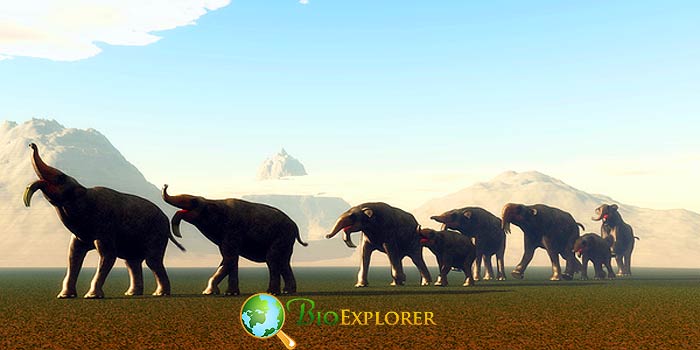
Two types of crops can be called “domesticated“:
- large-seed crops, such as rice, wheat, and barley.
- Small-seed crops, such as quinoa, amaranth, buckwheat, etc.
The latter have certain traits that do not make them an attractive target for domestication:
- The small size of the seeds requires many plants to be harvested for food.
- Hard shells that are not easily digestible.
- Slow seed germination
In the wild, those plants form small clusters that could not be attractive to foragers based on the above features. Two German scientists, Robert N. Spengler and Natalie Müller, have proposed an explanation for why those crops were eventually domesticated:
- Small seed crops were initially dispersed by grazing herds of large animals, from mammoth to yaks and bison.
- In areas of active grazing, certain plant species grow in large clusters where the herds can find them.
- As the humans destroyed the herds, they could also take over the role of seed dispersers.
- With time, the small seed crops have lost adaptations to spreading by the animal route and adapted to human-led seed dispersal.
- The typical example of this process is the disappearance of the so-called “lost crops” of North America. Bison previously dispersed these crops, and with the extinction of the species, they have become rare as well.
This theory still needs more evidence to be proven entirely. Still, based on both ecology and historical data, it is considered to be a very likely explanation of the domestication of these plants. These findings also show that the past domestication process was heavily influenced by the ecological situation of the time.
![]()
Even dinosaurs could be blind: a unique dinosaur that did not need sight to catch prey discovered in China [USA-China, January 2019]
Recently, two specimens of a previously unknown marine dinosaur were found.
The fossils had several traits previously not observed in this group:
- Exceptionally small eyes
- A beak-like snout resembling a similar structure in the platypus.
- Bony triangular plates covering a rigid body.
The fossil belongs to the Early Triassic, the period following shortly after the Permian extinction.
It is the first marine fossil of this period with low vision. It is proposed that the dinosaur probably used to search for prey using other senses, most likely mechanoreceptors. This finding shows that even after a significant extinction, there was considerable diversity of marine species.
![]()
The researchers have found the oldest fossilized evidence of embryonic development [UK-China, December 2019]
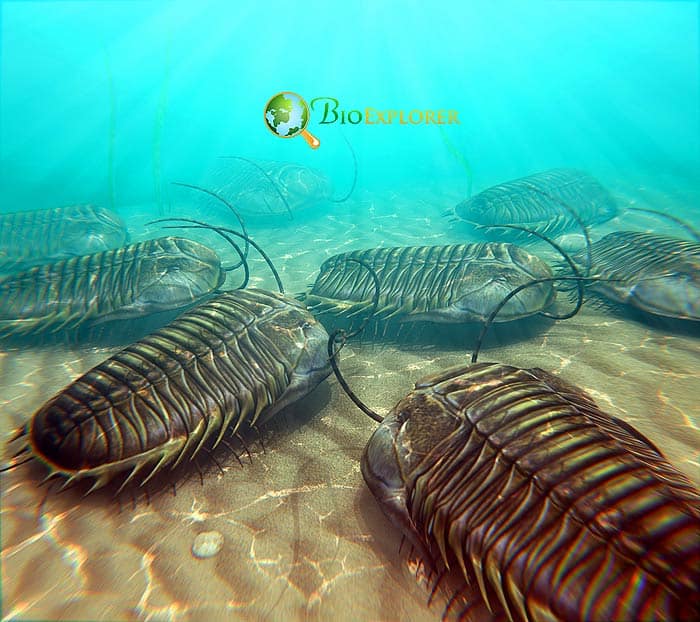
To date, there is no conclusive fossil evidence that shows how unicellular organisms have evolved into complex multicellular animals and plants.
One of the clues to such a transition may reside among ‘Wengan biota, a collection of microscopic fossils in South China dated approximately 609 million years ago.
It is thought to be the earliest representative of Ediacaran fauna, a collective term for fossilized soft-bodied organisms that have existed since 635 million years ago.
These feather-like organisms predate the famous Cambrian explosion of invertebrate life forms. Previously, it was thought that Weng`an biota contains mainly colonies of unicellular algae or cyanobacteria.
Recently, a team of researchers have found another unique fossil in this group of organisms – Cavaesphaera:
- This fossil has several forms, from a lense-like structure to a solid ball-like appearance.
- The researchers used X-ray tomography to reconstruct the cellular structure of the fossil in detail, as well as its development.
- The X-ray tomography has shown that the cells in Caveasphaera migrate in the course of its development and reorganize into a shape that resembles a gastrula, a typical structure seen during animals’ embryonic development.
- The development stages of Caveasphaera resemble that of sponges – one of the first truly multicellular animals.
- It is thought that Caveasphaera is not a fossil of an adult animal and maybe a fossilized embryo of a coral-like organism.
This new finding shows that the first embryo-like structures appeared before the evolution of true multicellular animals. It is also the first detailed evidence of early embryonic development in the fossil record that predates the Cambrian explosion.
![]()
Tracing the evolution of feathers [USA-Taiwan, November 2019]
Each Bird Species have its own unique feather structure. Sometimes a bird can have multiple feather types – for instance, downy and flight feathers. The type and organization of feathers can define a bird species’ flight style and other adaptations.
A team of Taiwanese researchers has used information from several disciplines to look into the evolution of these unique structures:
- The researchers have studied feathers from various birds species from ostriches to sparrows that have differed flight capabilities.
- The team also looked in detail at the feathers fossilized in amber dated approximately 100 million years from Myanmar’s fossil record.
- The genes that control feather development were also investigated.
- Feathers have several structural components:
- Central shaft (called rachis)
- Vane (lies in the periphery)
- The shaft, in its turn, has two components:
- Medulla that is located in the middle of the shaft and is porous
- Solid cortex that surrounds the medulla
- The organization and development of skin cells that form medulla and cortex of the feather shaft are controlled by Bmp gene.
- The vanes contain barbules that can have various shapes.
- Barbules often have structures that look like hooks.
- During development, barbules of necessary shape appear due to the reorganization of the epithelial cells forming a uniform sheet, similar to cutting a list of paper into a complex ornament.
- This process is controlled by another gene, Wnt2b.
- Ancient feathers found in amber have features similar to modern feathers, except the absence of the hooklets in the barbules that could hold the “hair” of the feather together like Velcro.
- Different types of feathers can form by modulating the development of the two major feather components.
36 Most Colorful Birds In The World!
This is the first comprehensive study of feather development and evolution principles. The researchers also hope that through understanding how basic feather “prototype” can be modified into the desired feather shape that could develop new light biomaterials.
![]()
The year 2019 has seen many new fossils found and new theories in evolutionary biology, which contributed to the development of multiple disciplines in the field.
The discoveries in 2019 presented in this article mostly influence the fundamental areas of evolutionary and developmental biology.
Still, there were other exciting discoveries we could not do justice to. For instance, it was shown that certain habits of ancient hominins, such as chewing birch pitch, can offer a unique insight into their lifestyle and diet. There were several fossils of previously unknown extinct species from whales to penguins.
Dinosaur paleobiology specialists have seen new species as well, including dromeosaurids and a new species of titanosaurs with a heart-shaped tail. Based on these finds, we may hope that we should be able to answer the questions that have troubled biologists since Darwin.
![]()


